Mount Batur Sunrise Trekking
This is a review and my experience of trekking one of Bali’s volcanos, Mount Batur, reaching the summit to catch the sunrise from it.
Mount Batur, also known as Gunung Batur, is an active volcano located in the Kintamani district of Bali, Indonesia. It stands at an elevation of 1,717 meters (5,633 feet) above sea level and is part of the larger Batur caldera, which encompasses the nearby Lake Batur, the largest lake in Bali.
Mount Batur is a popular destination for hiking and trekking, particularly for those seeking to witness the breathtaking sunrise from its summit. The volcano’s geological features, such as its lava fields and steam vents, offer a unique and diverse landscape that attracts nature lovers and adventure enthusiasts alike.
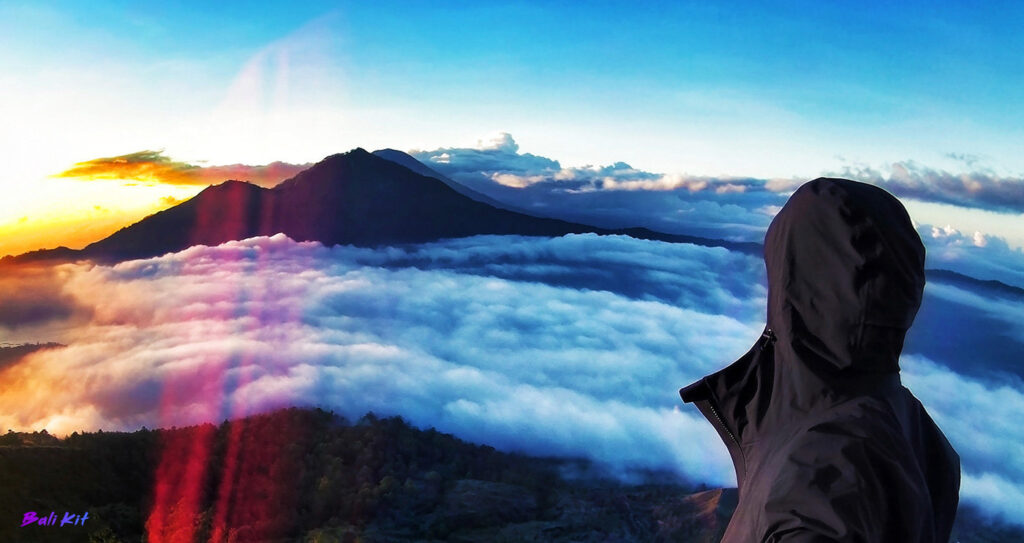
Trekking Mount Batur
It was a brisk, dark morning, and the excitement in the air was palpable. I was an American expat living in Bali, and today marked the day I would finally take on the challenge of hiking Mount Batur. I had heard about this active volcano’s enchanting beauty and its must-see sunrise from fellow travelers and locals alike. Little did I know that this experience would become one of the most unforgettable tales of my life.
My alarm jolted me awake at 2:00 AM, and as I groggily prepared, I pondered what lay ahead. With a flashlight in hand, I met my local guide, Ketut, who would lead me on this adventure. We set off from our meeting point in the nearby village, and as we walked, Ketut regaled me with stories about the volcano and Balinese culture.
Our hike began at the base of Mount Batur around 3:30 AM. The trail was rocky and steep, but the darkness of night and the thrill of the unknown kept me captivated. I followed Ketut closely as we traversed the uneven terrain, illuminating our path with our flashlights. All around us, I could hear the sounds of other hikers and the nocturnal creatures stirring in the shadows. I was pleasantly cold, an extreme rarity in Bali, but that didn’t last long.
As we ascended, the air grew cooler and thinner. We stopped for brief rests, during which Ketut shared more stories and the history of the volcano. I marveled at the fact that I was climbing an active volcano, the last eruption of which had occurred in 2000. I almost wanted it to erupt at that moment.
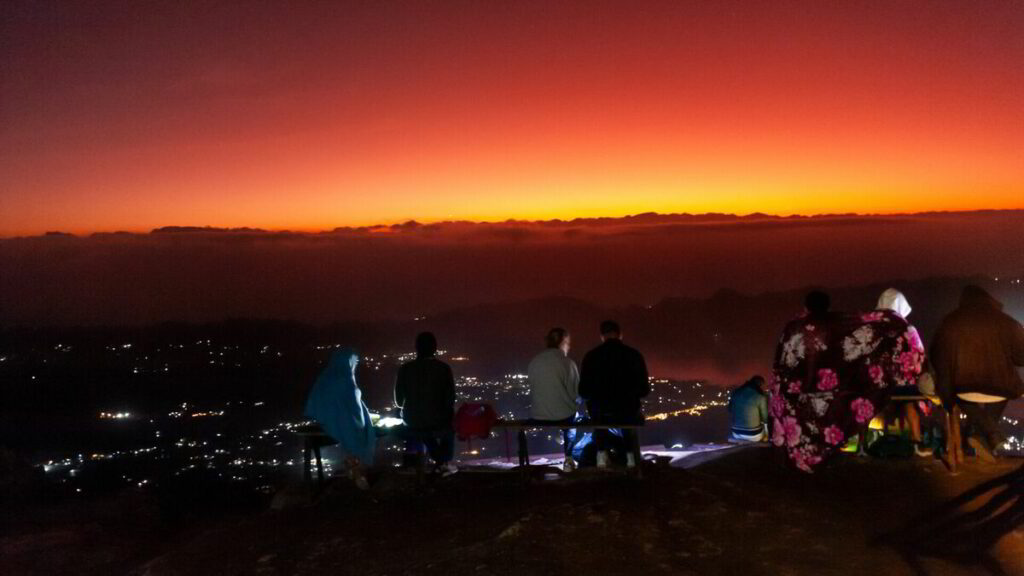
At around 5:30 AM, we reached the summit, greeted by a biting chill and a breathtaking sight. The sky was beginning to lighten, and we found a spot to sit and await the grand finale. Ketut handed me a steaming cup of coffee, and we huddled together, sharing laughter and conversation as we anticipated the sunrise.
At 6:15 AM, the moment we had been waiting for finally arrived. The first rays of sunlight pierced the horizon, casting a warm, golden glow over the clouds below. The colors shifted from deep purples and blues to vibrant oranges and pinks. I was awestruck by the panoramic view, as the sunlight illuminated the nearby Lake Batur and the surrounding landscape. It was as if the entire world was waking up before my eyes.
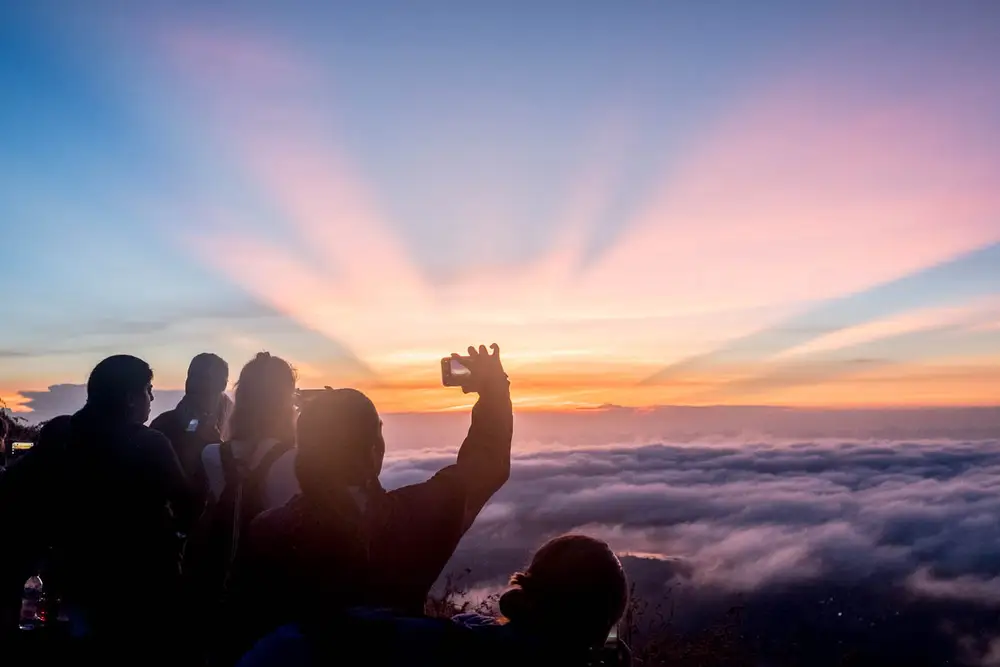
Mount Batur Sunrise
This majestic, active volcano stood tall and proud, a symbol of the island’s vibrant spirit and natural beauty. During the sunrise, Mount Batur transformed into an ethereal wonder, as if awakening from a deep slumber to greet the world. The summit, veiled in a gentle mist, basks in the golden glow of the morning sun, created an otherworldly ambiance that filled the heart with a sense of wonder and serenity.
As the sunlight cascaded down Mount Batur’s slopes, it unveiled a diverse landscape marked by its volcanic history. Black lava fields and verdant forests stand side by side, a testament to the harmonious coexistence of destruction and rebirth. The nearby Lake Batur shimmered like a precious gem, its tranquil waters reflected the kaleidoscope of colors above.
In the presence of Mount Batur at sunrise, one cannot help but feel humbled by the beauty and power of nature. It is a moment that transcends the ordinary, a fleeting glimpse into the sublime, and a reminder that amidst the chaos of life, there exists a world of unparalleled splendor, waiting to be discovered.
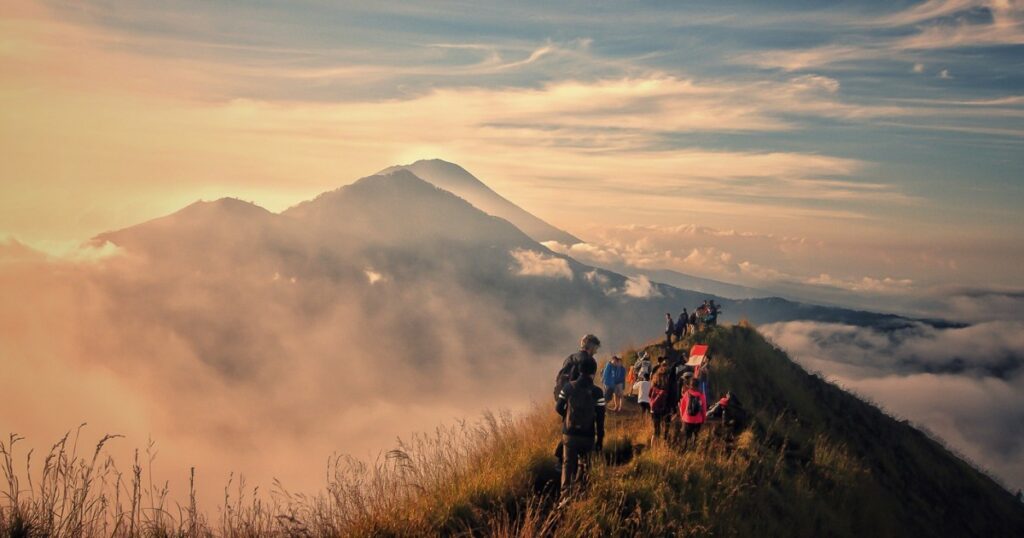
Mount Batur Descent
With the sun fully risen and our hearts filled with awe, Ketut and I began our descent. The way down was a different experience altogether, as the daylight revealed the true magnificence of the landscape. We passed by steam vents and black lava fields, a stark reminder of the powerful force that lay beneath our feet.
I now started to heat up with the cold long gone with the darkness. The Bali heat was back and I was missing the chill I haven’t ever felt on this island. It’s amazing how much different weather and climate you can experience in a matter of hours on this tropical island volcano.
We returned to the village around 9:00 AM, our bodies weary but our spirits soaring. As I bid farewell to Ketut, I knew I would never forget the magic of that morning on Mount Batur. The enchanting sunrise, the camaraderie, and the tales shared during our hike have etched themselves into my memory, leaving me with a story I will treasure for a lifetime.
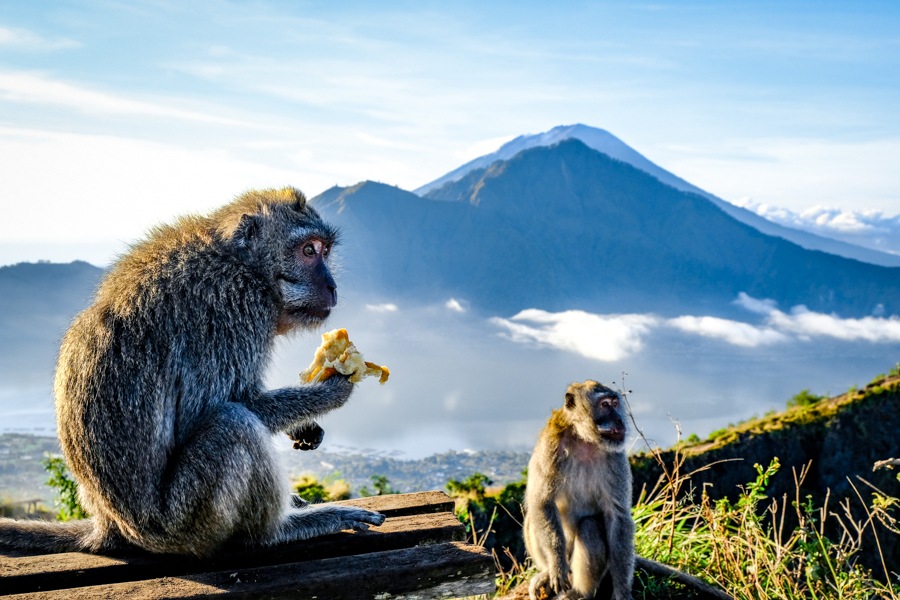
Monkeys on Mount Batur
The monkeys on Mount Batur are primarily long-tailed macaques, also known as Balinese macaques or crab-eating macaques (Macaca fascicularis). These intelligent and curious creatures are native to Southeast Asia and are quite common throughout the island of Bali, including in the vicinity of Mount Batur.
With their distinctive grayish-brown fur, expressive faces, and long tails, the macaques are an intriguing sight for visitors hiking Mount Batur. They are known to be social animals, often found in groups or troops, which can consist of several dozen members. These troops are organized in a hierarchical structure, with a dominant male presiding over the group.
The monkeys on Mount Batur are generally used to human presence and are known for their bold and opportunistic behavior. They can be seen gracefully navigating the volcanic terrain, skillfully foraging for food, which includes fruits, insects, and even small animals.
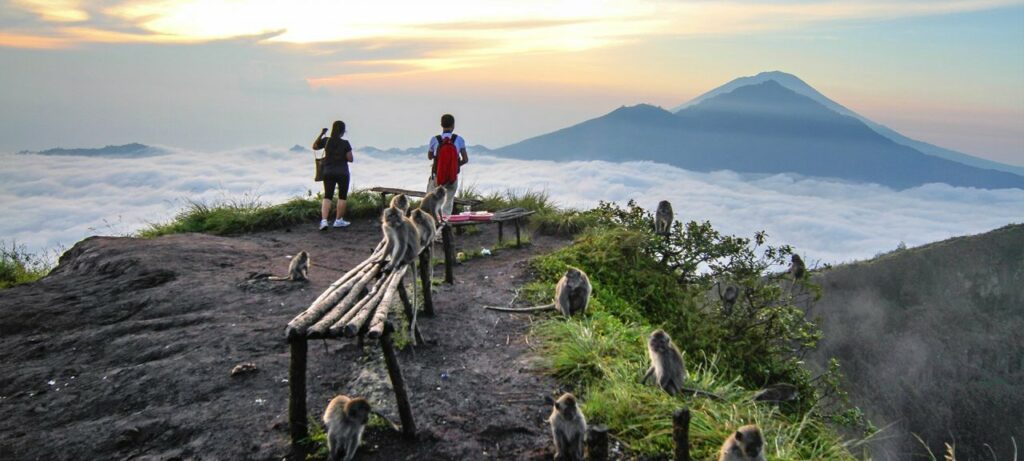
Mount Batur vs. Mount Agung
Mount Agung and Mount Batur are both prominent volcanoes located on the island of Bali, Indonesia. While they share some similarities as natural landmarks and popular hiking destinations, there are several key differences between the two:
Mount Agung is the highest peak in Bali, standing at an elevation of 3,031 meters (9,944 feet) above sea level. In contrast, Mount Batur is lower, with an elevation of 1,717 meters (5,633 feet). Consequently, Mount Agung is considered a more challenging climb due to its greater height and more demanding terrain.
Hiking Mount Batur is a popular activity for tourists seeking a more accessible trek, often completed as a sunrise hike. The hike typically takes around 2 hours to reach the summit, and hikers are rewarded with stunning panoramic views of the surrounding landscape, including Lake Batur. Mount Agung, on the other hand, is a more challenging and longer hike, typically taking around 6 hours to reach the summit.
Mount Agung and Mount Batur are both impressive volcanic landmarks in Bali, but they differ in terms of elevation, geological activity, spiritual significance, and the nature of the hiking experiences they offer. While Mount Batur is more accessible and popular for sunrise hikes, Mount Agung is the island’s highest peak and holds greater spiritual importance.
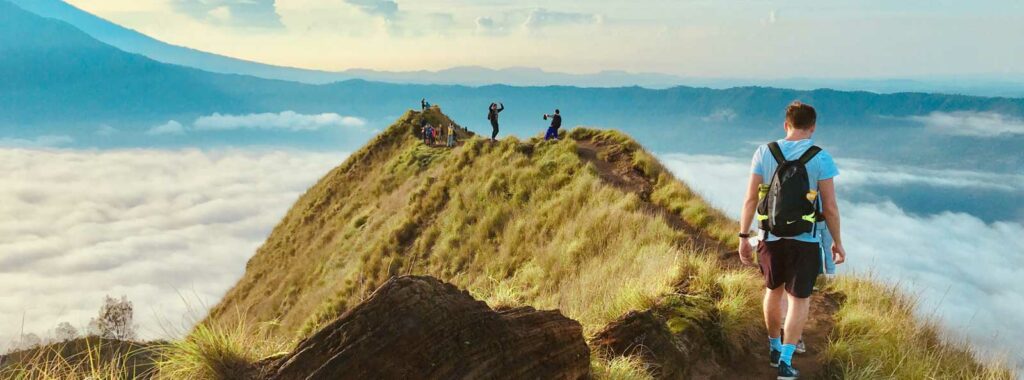
When going on your sunrise hike to the top this volcano, make sure you get a friendly guide. It’s sorta kinda mandatory (even though it’s not such a tough trek that you *need* a guide) as an unwritten rule. Even so, I’ve already trekked Mount Batur 3 times, each time with a guide – by choice. It’s just nice to have a local to chat (in perfectish English) while going up while he or she explains every little thing about the mountain and surrounding culture around it, to enhance the experience.
Guides don’t cost much but whatever money they get you can rest assured that they’ll be putting that money to good use. And if you found value at the end of the hike, give them a nice tip.
Despite its active status, Mount Batur is considered relatively safe for visitors, making it a top attraction for tourists and locals seeking to experience the natural beauty and cultural significance of this fascinating geological landmark.






